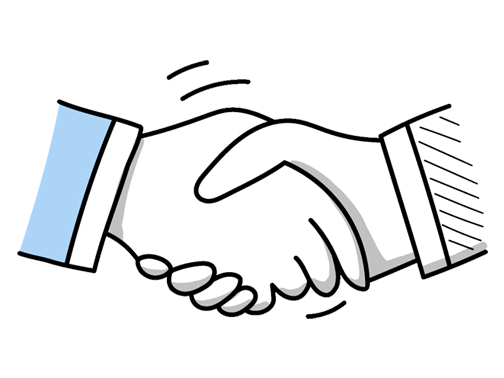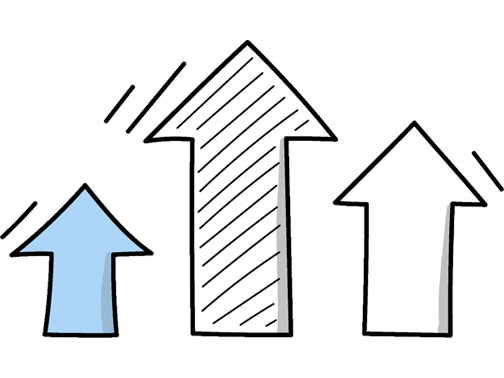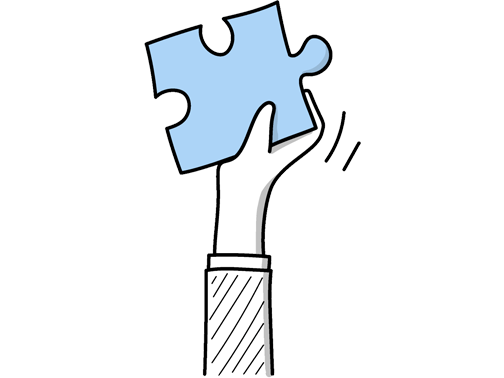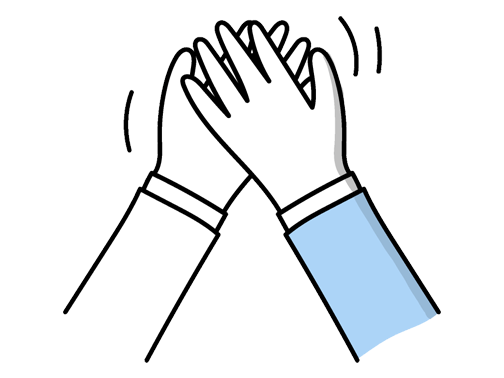Research and Development Director Interview Questions (2025 Guide)
Find out common Research and Development Director questions, how to answer, and tips for your next job interview
Practice Interviews Online - Identify your strengths and weakness in a realistic Research and Development Director mock interview, under 10 minutes
Practice Now »Research and Development Director Interview Questions
What they want to understand is how you use market insights to guide innovation and prioritize projects effectively. You need to explain that market research helps identify customer needs and industry trends, ensuring your R&D strategy aligns with business goals and creates competitive advantage.
Example: Market research is integral to shaping our R&D strategy. It helps us pinpoint real customer needs and spot emerging trends, so our innovations stay relevant. For example, when developing a new product line, understanding user feedback early on can guide adjustments, ensuring better market fit and reducing risk. Without this insight, R&D would be more of a shot in the dark than a focused, informed effort.
Employers ask this to see if you are proactive and continuously learning to keep your skills relevant. You should mention specific sources like journals, conferences, or professional networks you regularly use to stay informed.
Example: I make it a habit to read key industry journals and attend conferences whenever possible, as they offer fresh insights and networking opportunities. I also engage with professional groups and participate in workshops to discuss emerging trends firsthand. Recently, a webinar on sustainable technologies sparked ideas we’re now exploring in a new project—staying connected like this helps me lead innovation effectively.
What they want to know is how you bridge gaps to promote collaboration and avoid misunderstandings between teams. You need to say you establish regular cross-department meetings and use clear, open channels for feedback and updates.
Example: Ensuring smooth communication starts with building strong relationships across teams. I encourage regular cross-department meetings where insights and challenges are openly shared. For example, aligning R&D timelines with marketing’s launch plans avoids surprises. I also promote a culture where questions and feedback are welcomed anytime, which helps us stay agile and aligned with the company’s goals. This way, collaboration feels natural and productive.
This interview question aims to understand how you systematically manage innovation to ensure valuable ideas are effectively developed and implemented. You need to explain how you establish structured evaluation processes like stage-gate models, collaborate with cross-functional teams for thorough validation, and use piloting methods to test and refine ideas before full rollout.
Example: When new ideas come in, I start by setting clear criteria to quickly assess their potential impact and feasibility. I work closely with different teams to fine-tune these concepts, ensuring diverse perspectives shape the approach. Before a full rollout, we run small-scale pilots to test and adjust, much like when we trialled a new material in one factory before expanding across the production line. This helps manage risk and build confidence.
Employers ask this question to see how you encourage new ideas and maintain a dynamic, innovative environment. You need to explain that you promote open communication, support risk-taking, and provide resources that inspire creativity within your team.
Example: Creating an environment where ideas can flow freely is key. I encourage open dialogue and celebrate curiosity, ensuring everyone feels comfortable sharing their thoughts without fear of judgment. For example, in my previous role, regular brainstorming sessions led to unexpected collaborations that sparked new product features. It’s about balancing structure with flexibility, so creativity isn’t stifled but guided toward impactful results.
Questions like this assess your ability to manage multiple high-impact projects while optimizing limited resources and adapting to change. You need to explain how you evaluate projects by strategic value and impact, allocate resources by balancing skills and budgets, and adjust plans through clear communication when challenges occur.
Example: In an R&D setting, I start by evaluating projects for their alignment with company goals and potential impact. Then, I match resources carefully—balancing team expertise, budget, and deadlines. I keep communication open so the team can adapt quickly as priorities shift. For example, at my last role, we reallocated engineers mid-project to accelerate a high-potential initiative without compromising other deliverables. This approach keeps progress steady and focused.
This interview question helps assess your ability to connect R&D activities with the company's big-picture goals, ensuring your work drives meaningful business outcomes. You should explain how you identify and prioritize projects that support strategic objectives and describe your approach to collaborating with other teams to keep efforts aligned.
Example: To align R&D with company goals, I start by deeply understanding the business’s vision and key priorities. From there, I focus our projects on areas that drive the most impact, regularly checking in with sales, marketing, and operations teams to keep efforts coordinated. For example, at my last role, this approach helped us develop a product that not only met customer needs but also accelerated revenue growth.
Employers ask this question to see how you manage different perspectives and skills while keeping the team focused on strategic objectives. You need to explain that you foster inclusive communication and collaboration, setting clear goals aligned with the company’s vision to drive innovation and success.
Example: Leading a diverse R&D team means valuing different perspectives and fostering open communication. I prioritise understanding individual strengths, encouraging collaboration, and linking our projects clearly to the company’s vision. For example, in my last role, organising cross-functional workshops helped align ideas and kept everyone focused on shared goals, boosting both innovation and productivity.
Questions like this help interviewers understand your ability to drive innovation and manage projects effectively. You need to clearly describe the project, your role in leading it, and the impact it had on the company or industry.
Example: Certainly. In my previous role, I led the development of a smart packaging solution that reduced material use by 30% while enhancing product freshness. We collaborated closely with both suppliers and the design team to align innovation with sustainability goals. This project not only cut costs but also opened new market opportunities, demonstrating how targeted research can drive meaningful business growth.
Questions like this assess your ability to manage diverse opinions and maintain a productive team environment under conflicting situations. You need to say that you listen actively to understand all viewpoints, mediate discussions to find common ground, and keep the team motivated and focused on shared research goals.
Example: When conflicts arise over research directions, I focus on listening carefully to everyone’s perspectives to understand their reasoning. I encourage open dialogue so the team can explore ideas together and find common ground that supports our overall goals. For example, in a past project, we combined two different approaches after discussing their merits, which strengthened our outcome and kept the team aligned and motivated throughout.
This question assesses your ability to bridge the gap between technical teams and non-technical stakeholders, ensuring alignment and informed decision-making. You need to explain how you simplify complex ideas using relatable examples, tailor your message based on the audience’s knowledge, and foster open dialogue to promote understanding and collaboration.
Example: When explaining technical ideas to non-specialists, I focus on using clear, relatable language and analogies that connect with their experience. I tailor the depth of detail depending on the audience, whether it’s senior management or marketing teams. Engaging them early, inviting questions, and encouraging two-way dialogue helps build understanding and trust, making complex information accessible and actionable across departments.
This interview question assesses your ability to strategically collaborate beyond your organization, which is crucial for accessing new technologies and innovations in R&D. You need to explain how you identify valuable partners, establish trust, and maintain ongoing communication to foster long-term, mutually beneficial relationships.
Example: I focus on nurturing relationships based on mutual goals and trust, staying open to new ideas and expertise. Regular communication and shared milestones keep partnerships dynamic. For example, in my previous role, collaborating with a university led to innovative prototypes that neither could develop alone. It’s about creating value on both sides and being adaptable as projects evolve.
Employers ask this question to assess your problem-solving skills and technical expertise in real situations. You should clearly describe the problem, explain the innovative approach you took to solve it, and highlight the positive results and lessons learned.
Example: In a previous role, we faced significant delays due to integration issues between new software and existing hardware. I led a cross-functional team to map out the problem, running targeted tests and iterating on solutions. By fostering collaboration and focusing on incremental improvements, we reduced integration time by 30%. This experience reinforced the value of clear communication and agile problem-solving in overcoming complex technical hurdles.
Hiring managers ask this question to understand how you align R&D outcomes with the company’s long-term goals and competitive advantage. In your answer, explain that you measure success by the project's contribution to innovation pipeline, market positioning, and its ability to drive future growth.
Example: Measuring the strategic impact of R&D means looking beyond immediate outputs. I focus on how projects align with long-term business goals, such as entering new markets or enhancing competitive advantage. For example, a past project shifted our product roadmap, opening up a previously untapped customer base. It's about lasting value—whether the innovation helps shape the company’s future direction and drives sustainable growth.
Interviewers ask this question to see how you lead, inspire, and grow your team effectively. You should explain that you use regular feedback and recognition to motivate, offer personalized training to develop skills, and encourage open communication to build a collaborative team environment.
Example: I focus on creating a supportive environment where ideas are welcomed and everyone feels their contribution matters. Regular one-on-ones help me understand individual goals and tailor opportunities like training or challenging projects. Encouraging collaboration through team workshops or cross-functional tasks not only builds trust but also sparks innovation. For example, in my previous role, a monthly innovation day helped the team share knowledge and grow together while feeling genuinely motivated.
Employers ask this question to see how you handle complex problems, lead teams through uncertainty, and learn from tough choices. You need to clearly describe the situation, your thought process in weighing risks and benefits, how you communicated your decision, and the positive impact or lessons that followed.
Example: In a previous role, we faced a choice between continuing a promising but slow project or reallocating resources to a quicker innovation with clearer market potential. After careful analysis, I decided to pivot the team’s focus, explaining the reasoning transparently to keep morale high. This shift accelerated our timeline and ultimately led to a successful product launch, reinforcing the value of adaptability and clear communication in leadership.
This interview question aims to assess your ability to maintain high standards and consistency in research outcomes, ensuring your team produces reliable and impactful work. You need to explain how you implement rigorous review processes and promote a culture of continuous learning and accountability within your team.
Example: To maintain high technical standards, I promote a culture of thorough peer review and open dialogue within the team. We set clear benchmarks early on and regularly revisit them to ensure consistency. For example, in a recent project, we implemented cross-disciplinary check-ins that helped catch potential issues early, improving both the depth and reliability of our findings. This approach keeps our research both rigorous and relevant.
Hiring managers ask this question to understand how you plan strategically and lead innovation over time. You need to explain your approach to analyzing industry trends, setting clear long-term goals, and collaborating with diverse teams to ensure alignment and success.
Example: When developing a long-term R&D strategy, I start by scanning the market and tech landscape to spot emerging opportunities. From there, I work with teams across functions to set ambitious yet achievable goals that everyone understands. Keeping communication open is vital—regular check-ins help ensure all stakeholders stay aligned and motivated. For example, in a previous role, this approach helped us pivot quickly and lead innovation in renewables.
Interviewers ask this to assess your teamwork and cross-functional communication skills, which are crucial for leading R&D effectively. You need to describe a specific instance where you worked closely with another department, highlighting the positive outcome and your role in making the collaboration successful.
Example: In my previous role, I worked closely with the marketing team to align product development with customer needs. By sharing insights and feedback regularly, we launched a new feature that significantly improved user engagement. This partnership not only accelerated our timeline but also ensured the product resonated well with our target audience, demonstrating the value of cross-department collaboration.
Employers ask this question to see if you can keep your R&D strategy relevant amid fast-changing technology and market conditions. You need to explain how you monitor trends regularly, use feedback loops with your team, and design flexible roadmaps that balance long-term goals with short-term adjustments.
Example: To keep R&D strategies adaptable, I stay closely connected to emerging technologies and industry shifts, regularly reassessing our direction. I encourage continuous feedback and iterative review within teams, so we can pivot when necessary without losing sight of our broader goals. For example, in a previous role, we adjusted our product roadmap mid-cycle after early user tests revealed new opportunities, which ultimately strengthened our market position.
Hiring managers ask this question to assess your depth of technical expertise and your ability to lead complex projects and teams in innovation. You need to highlight your command of advanced scientific principles, your experience managing multidisciplinary teams, and your proficiency in research methodologies and development processes.
Example: In my view, a strong grasp of the core scientific and engineering concepts is crucial, alongside the ability to lead diverse technical teams effectively. It’s important to have hands-on experience guiding projects from initial research through development to delivery. For example, coordinating between chemists and engineers to bring a new product from the lab to market requires both technical insight and collaborative leadership.
Questions like this assess your understanding of how technology fuels progress and competitive advantage in R&D. You need to explain that technology enables new discoveries and accelerates development processes, making innovation more efficient and impactful.
Example: Technology acts as a catalyst in R&D, enabling faster experimentation and deeper insights. It helps teams collaborate seamlessly across disciplines and locations, accelerating idea development. Take AI-driven data analysis— it can reveal patterns that might otherwise go unnoticed, guiding smarter decisions. Ultimately, technology doesn't just support innovation; it shapes how we discover and create new solutions.
Interviewers ask this question to assess your openness to improvement and your ability to collaborate effectively. You need to say that you value constructive feedback as a tool for growth and actively seek input to enhance your projects and leadership.
Example: I welcome feedback as an essential part of growth, whether from peers or stakeholders. I listen carefully, reflect on the points raised, and use them to improve our projects. For example, in a recent project, a stakeholder’s critique led us to reconsider our approach, resulting in a more efficient solution. I find that staying open and collaborative turns feedback into a valuable resource rather than a challenge.
This question assesses your ability to manage uncertainty while driving progress. You need to explain how you evaluate potential risks, prioritize projects with promising outcomes, and implement controls to innovate safely.
Example: Balancing risk and innovation means fostering creativity while staying grounded in data and market insight. I encourage teams to explore bold ideas but set clear milestones to evaluate progress. For example, in a past project, we tested early prototypes in controlled settings to manage uncertainty without stifling innovation. It’s about creating an environment where smart risks are calculated, not avoided, ensuring breakthroughs align with business goals.
Hiring managers ask this question to see how you cultivate creativity and innovation, which are crucial for driving breakthrough research. You need to explain how you create a safe space for ideas, promote diverse collaboration, and support testing new concepts within your team’s processes.
Example: I create a culture where everyone feels safe to share unusual ideas without judgment. We use brainstorming sessions and cross-team workshops to spark fresh perspectives. I also encourage experimenting with small-scale pilots, so creative concepts can be tested in real projects. This way, innovation becomes part of our daily routine rather than a one-off event. For example, a recent pilot led to a new product feature that boosted customer satisfaction significantly.
Ace your next Research and Development Director interview with even more questions and answers
Common Interview Questions To Expect
The interviewer is looking to see how you found out about the job opening and what sources you use to stay informed about opportunities. Be honest and specific in your response.
Example: I actually came across this position on a job board website while I was actively looking for new opportunities in the research and development field. I also follow the company on LinkedIn, so when I saw the job posting, I knew it would be a great fit for my skills and experience. I'm always keeping an eye out for exciting roles like this one that align with my career goals.
The interviewer is looking for a candidate to demonstrate their understanding of the role, company, and industry. They want to see how the candidate's skills and experience align with the responsibilities of the position.
Example: I am interested in this role because I have a passion for innovation and problem-solving, which are essential skills for a Research and Development Director. I am excited about the opportunity to lead a team in developing new products and technologies that can make a positive impact in the industry. I believe my background in research and development, along with my leadership experience, make me a strong fit for this position.
The interviewer is looking for a candidate to demonstrate their qualifications, skills, experience, and passion for the role. Answers should highlight how the candidate's background aligns with the job requirements and how they can bring value to the company.
Example: Well, I have over 10 years of experience in leading research and development teams, with a proven track record of successful projects and innovations. My background in engineering and my passion for pushing boundaries in technology make me confident that I can bring valuable insights and drive results for the company in this role. I am excited about the opportunity to contribute to the growth and success of the team.
The interviewer is looking for examples of how you have successfully collaborated with others, communicated effectively, and contributed to achieving team goals.
Example: Sure! In my role as a Research and Development Director, I have led cross-functional teams to develop innovative products, ensuring everyone's ideas were heard and valued. By fostering open communication and collaboration, we were able to meet project deadlines and exceed our goals. My experience working in a team has taught me the importance of teamwork and how it can drive success in any project.
The interviewer is looking for insight into your personal motivations, values, and work ethic. You can answer by discussing your passion for the industry, desire for growth, or commitment to making a positive impact.
Example: What motivates me is my passion for innovation and problem-solving in the research and development field. I am driven by the opportunity to make a positive impact through creating new technologies and solutions. I am constantly seeking growth and challenges to push myself further in my career.
Company Research Tips
The company's official website is a treasure trove of information. Look for details about the company's history, mission, vision, and values. Pay special attention to the 'About Us', 'Our Team', and 'News' sections. The 'About Us' section will give you an overview of the company's history and current operations. The 'Our Team' section can provide insights into the company's leadership and their backgrounds. The 'News' section can keep you updated on the company's latest developments and achievements.
Tip: Don't just skim through the website. Take notes and try to understand the company's culture, goals, and challenges. This will help you tailor your responses during the interview.
Social media platforms like LinkedIn, Twitter, and Facebook can provide valuable insights into the company's culture and operations. Look at the company's posts, comments, and interactions with customers. LinkedIn can provide information about the company's employees, their roles, and their backgrounds. Twitter and Facebook can give you a sense of the company's customer engagement and public image.
Tip: Follow the company on these platforms to stay updated on their latest news and announcements. Also, look at the profiles of the company's employees, especially those in the research and development department.
Understanding the company's competitors can give you insights into the industry and the company's position within it. Look at the competitors' products, services, and strategies. This can help you understand the company's unique selling points and the challenges it faces.
Tip: Use tools like Google Alerts to stay updated on the company's competitors. Also, try to understand the company's competitive advantage and how it differentiates itself from its competitors.
Being aware of the latest industry trends can show that you are proactive and interested in the field. Look for industry reports, articles, and news to understand the current trends and future predictions. This can help you understand the opportunities and threats the company might face.
Tip: Use platforms like Google Scholar, industry-specific forums, and professional networks to find relevant information. Also, try to relate these trends to the company's operations during the interview.
What to wear to an Research and Development Director interview
- Dark-colored business suit
- White or light-colored dress shirt
- Conservative tie
- Polished dress shoes
- Minimal and professional accessories
- Neat and professional hairstyle
- Light and natural makeup for women
- Clean and trimmed nails
- Avoid flashy jewelry
- Wear subtle perfume or cologne





